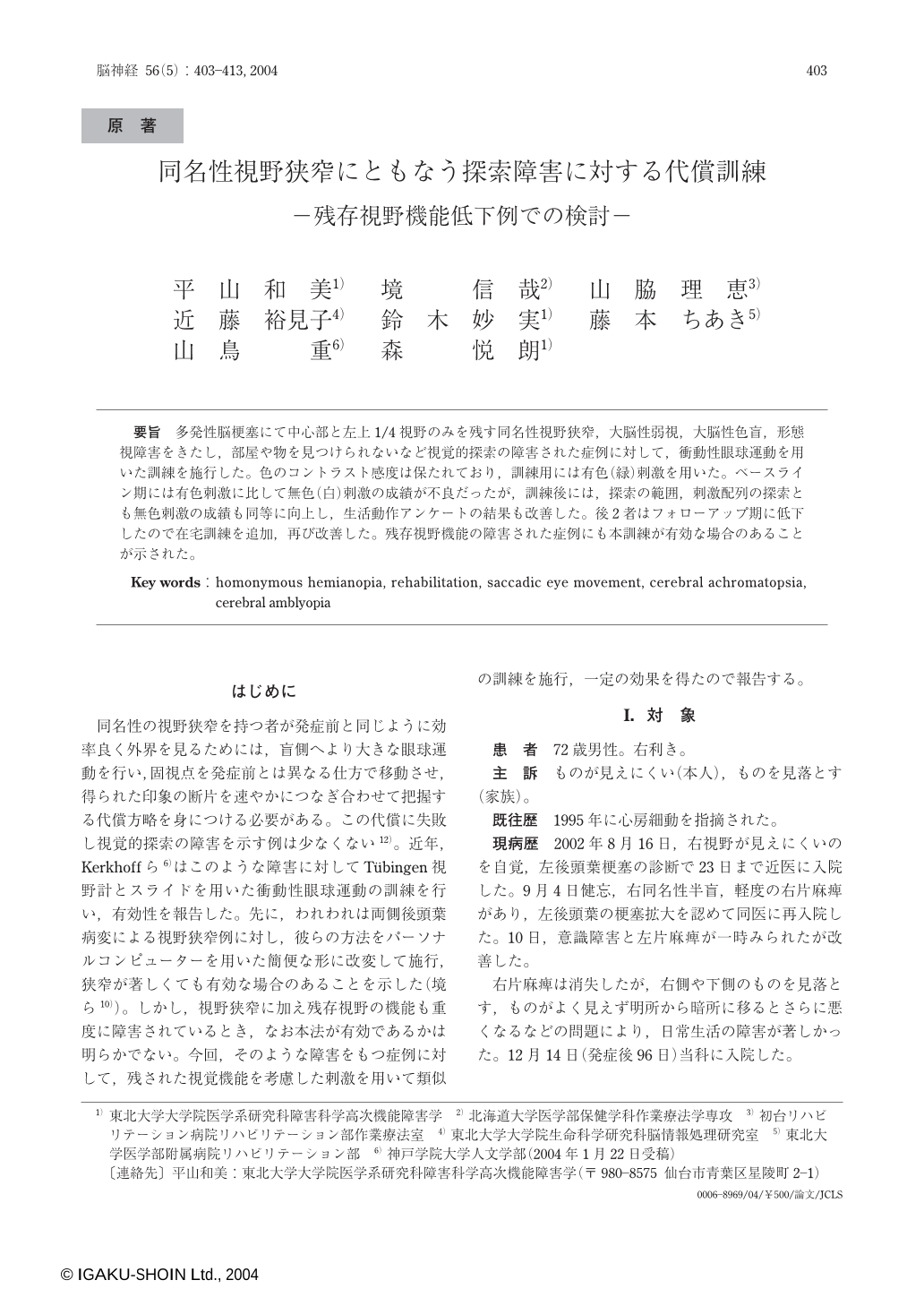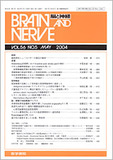Japanese
English
- 有料閲覧
- Abstract 文献概要
- 1ページ目 Look Inside
要旨 多発性脳梗塞にて中心部と左上1/4視野のみを残す同名性視野狭窄,大脳性弱視,大脳性色盲,形態視障害をきたし,部屋や物を見つけられないなど視覚的探索の障害された症例に対して,衝動性眼球運動を用いた訓練を施行した。色のコントラスト感度は保たれており,訓練用には有色(緑)刺激を用いた。ベースライン期には有色刺激に比して無色(白)刺激の成績が不良だったが,訓練後には,探索の範囲,刺激配列の探索とも無色刺激の成績も同等に向上し,生活動作アンケートの結果も改善した。後2者はフォローアップ期に低下したので在宅訓練を追加,再び改善した。残存視野機能の障害された症例にも本訓練が有効な場合のあることが示された。
A 72-year-old right handed man developed right homonymous hemianopia without macular sparing, left homonymous lower quadranopia with macular sparing, cerebral amblyopia, cerebral achromatopsia, impaired form vision, and mild right hemispatial neglect, after multiple cerebral infarctions, involving bilateral occipital cortices. His intelligence and memory were deteriorated moderately. He failed to notice objects located in the affected visual field, because of his severely impaired visual search. When ordinary lighting was used, he showed severe right-sided omissions on the line cancellation test. However, omissions were less marked under the brighter lighting.
By using a modified method of Kerkhoff and Vianen (1994), he was trained to make saccadic eye movements toward affected regions to find a target and to search and point at targets arranged randomly. As the sensitivity for contrast of isoluminante red and green stimuli was preserved well at high spatial frequencies despite the decreaced contrast sensitivity for brightness, we used green targets as the training stimuli. After the training, search field and pointing range that could be covered by the patient increased in size for both green and white targets, and daily activities improved. Moreover, after the training, he no longer showed discrepancy in line cancellation performances between ordinary and brighter lighting conditions.
In the follow up period, the search field and the performance on the line cancellation test were maintained, while the performance of pointing targets array declined. The family members complained of mild re-deterioration of daily activities. Then, the training for searching and pointing re-introduced at home. After the training, his pointing performance and daily activities, evaluated by questionnaires to his family members, improved again.
In conclusion, it was suggested that disordered visual search after a homonymous field defect can be treated effectively, even if multiple visual dysfunctions were associated.
(Received : January 22, 2004)

Copyright © 2004, Igaku-Shoin Ltd. All rights reserved.


